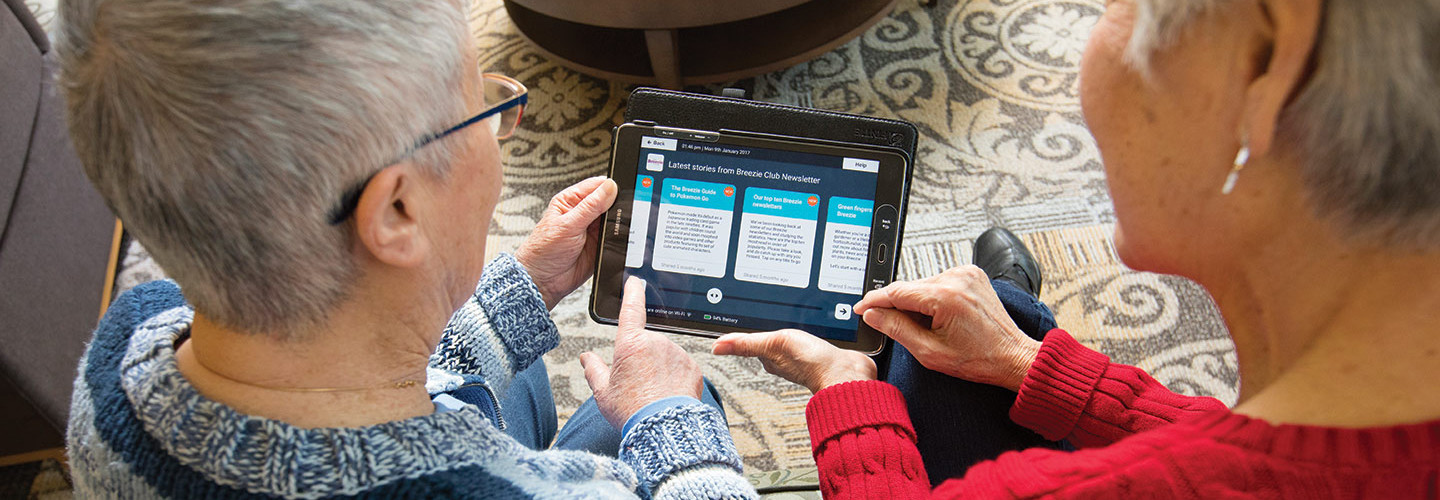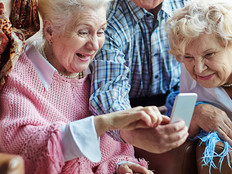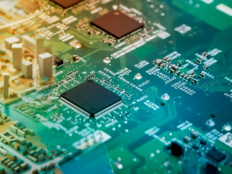Smart Technology Helps Seniors Age in Place
Smart tools are poised to make it easier for adult children and caregivers to better support aging individuals, even as those elders continue to live on their own.
As roughly 10,000 Americans turn 65 every day, according to Social Security Administration estimates, many prefer to maintain an independent lifestyle. Still, the figure is daunting, considering that existing senior living facilities can’t accommodate those numbers — and it’s unlikely that a massive volume of new senior housing will be built in the near future.
But a combination of pervasive home Wi-Fi and the Internet of Things allows seniors to get the support they need while still living in their own homes. Operators of senior living facilities, such as Masonic Homes of California and Acacia Creek, hope to use such technology to serve their residents more efficiently.
Senior Care Pilots for the Future
Charged with caring for California Masons in their later years, regardless of financial means, the Masonic Homes has recognized an opportunity to evolve its approach to care. With assistance from CDW, the organization recently launched a pilot program to assess how to best leverage technology to support seniors in its communities, as well as at adjacent Acacia Creek Retirement Community.
Under the guidance of Masons of California Chief Operating Officer Michael Skaff, two apartments — one at the Masonic Homes and one at Acacia Creek — were equipped with a variety of technology. Smart thermostats and temperature/humidity sensors, for instance, keep residents’ living spaces comfortable, while also enhancing safety. For example, low humidity can lead to dehydration, which increases risk of falls. Additionally, bed sensors can track residents’ respiration and heart rates, sleep duration and motion, and the number of times a resident gets in and out of bed during the night. Such data will be useful for following changes in a resident’s well-being over time.
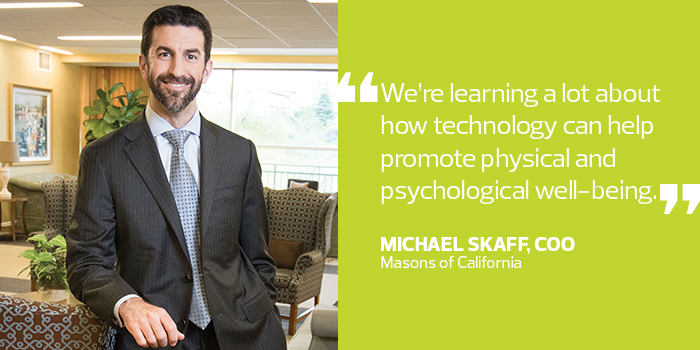
Sensors also have been integral to research conducted at TigerPlace, a retirement community in Columbia, Mo. There, sensors alerted caregivers to incipient senior mobility issues several weeks before they resulted in a fall.
The study, undertaken in conjunction with the University of Missouri College of Engineering, used analytics to correlate changes in gait with falls. The result? TigerPlace kept senior residents safer by intervening before they got hurt.
“When seniors fall, it can change their quality of life irrevocably,” TigerPlace Director of Nursing Bethann Rosson says. “It’s much better to intervene before a fall occurs.”
Motion sensors also have allowed Rosson’s team to detect and treat urinary tract infections, another common cause of hospitalization among seniors, much earlier by tracking trips to the bathroom. Combined with other sensor-enabled monitoring, TigerPlace has nearly doubled its residents’ length of stay in independent living, she says.
Extended Independence
In the Masonic Homes and Acacia Creek smart apartments, residents test managing their own digital environments — including their home entertainment systems and internet services — with tools such as Breezie, a complete platform that comprises an end-user tablet, a management hub and the Samsung Knox Software Development Kit, which adds customization, configuration control and security features beyond those on standard operating systems.
The result is a complete mobility solution geared to meet the specific needs and preferences of older users. Digital medication dispensers are also being tested. They will help residents maintain complex medication regimens by providing the prescribed dose at the correct time.
Dispensers can hold a 90-day supply of up to 15 different medications and alert both residents and caregivers via text and email when it’s time to reorder.
New Views On Well-Being
“We’re learning a lot about how technology can help promote physical and psychological well-being,” Skaff says. “We’re also determining which tools are most valuable to improving resident care.”
Of course, not every senior has a relationship with an organization as committed to senior care as the Masons. Who will set up seniors with the technology they need? And who will use that technology to help them keep living independently as long as possible?
Several channels exist for seniors to obtain technology-aided help, says Laurie Orlov, founder of Aging In Place Technology Watch. For instance, aside from organizations like the Masonic Homes that already provide senior care and extend their operating models to include clients who remain in their own homes, Orlov points to digital startups launched to specifically support the “silver tsunami” population.
Many times, she says, adult children and other family members take a lead role in technology-enabled senior care. One reason is cost: A large percentage of seniors don’t have the means to pay for professional services every month. With digital tools, Orlov says, they may not have to, as family members can be alerted if and when assistance becomes necessary. A smart smoke alarm, for example, can send an emergency text alert to a caregiver in addition to beeping in a senior’s home.
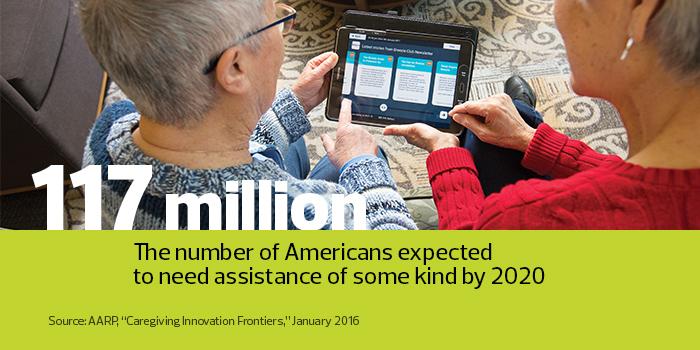
Adopt an Opt-In Attitude to Security
Privacy and data security represent another kind of challenge to using such tools. Whether data is shared with a family caregiver, a professional care provider or both, caution must be exercised to protect seniors’ identities and personal dignity.
“Seniors certainly welcome help from those they trust, but no one wants to live in a Big Brother-y environment,” says Jeffrey Makowka, director of market innovation at AARP.
What’s more, such tools, as well as their associated support services, require continuous recalibration as conditions and needs change over time. No two people experience loss of eyesight, hearing, mobility, physical stamina and memory at the same time or at the same pace, meaning seniors aren’t likely to opt in to a technology until it’s necessary. That means wired living for seniors is less of a one-time install and more of a constant evolution.
Two factors, Rosson says, lead more residents at TigerPlace to opt in to smart home services than any others: safety and quality results and the sense that participation in the program makes them modern-day pioneers.
“By using smart home technology, seniors feel like they’re contributing to the future,” she says. “That’s very appealing to people who have a deep desire to still be useful.”


